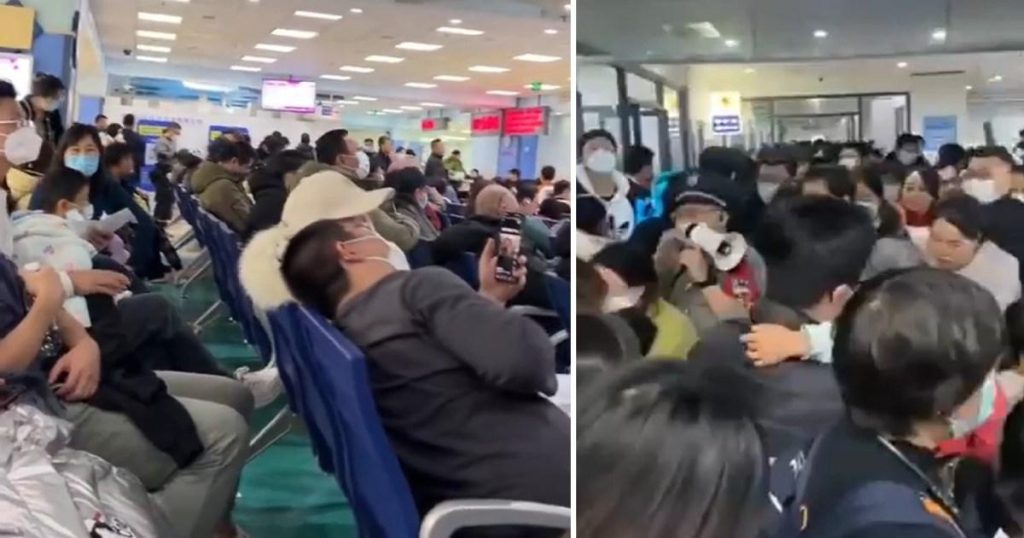Human metapneumovirus (hMPV), a common respiratory virus, has garnered recent attention due to reports of increased cases, particularly in China. Images circulating online depicting crowded hospital waiting rooms and patients receiving intravenous fluids have sparked concern and evoked memories of the COVID-19 pandemic. While these scenes are undoubtedly distressing, it is crucial to understand the nature of hMPV and its typical presentation. Unlike the novel coronavirus, hMPV is not a new virus. It was first identified in the Netherlands decades ago and is a well-known cause of respiratory illness, especially in young children. While the reported increase in cases, particularly in China, warrants monitoring, the situation is distinct from the emergence of a novel and highly transmissible virus like SARS-CoV-2.
Health authorities in several countries, including the UK, India, Kazakhstan, and Malaysia, have reported increased hMPV activity. In the UK, data indicates a rise in cases during December 2024 and into January 2025, consistent with seasonal trends observed in previous years. Experts, including Prof. Paul Hunter from the University of East Anglia, note that while the percentage of positive tests has increased, it remains comparable to levels seen in the same period the previous year. While continued monitoring is necessary, there is no current indication that the increase in hMPV cases represents a significantly more serious threat than in previous years.
The heightened awareness of respiratory illnesses following the COVID-19 pandemic has likely contributed to the increased attention given to hMPV. The pandemic experience has sensitized the public and health authorities to the potential for rapid spread and severe outcomes associated with respiratory viruses. This heightened awareness is undoubtedly beneficial for promoting public health measures such as hand hygiene and respiratory etiquette, but it also carries the risk of amplifying concerns and creating unnecessary alarm. It is important to contextualize the current hMPV situation within the broader understanding of respiratory virus seasonality and the known characteristics of hMPV.
The symptoms of hMPV are generally mild, resembling those of a common cold or flu. Most individuals recover within two to five days without requiring specific medical intervention. Common symptoms include cough, fever, nasal congestion, and wheezing. In some cases, however, hMPV can lead to more serious complications such as bronchitis, bronchiolitis, and pneumonia, particularly in vulnerable populations like young children, the elderly, and individuals with underlying health conditions. While concerning, these severe cases represent a small proportion of overall hMPV infections.
Currently, there is no specific vaccine or antiviral treatment for hMPV. Management focuses on alleviating symptoms and providing supportive care. However, scientific research is ongoing to develop vaccines that could protect against hMPV. Notably, a phase 1 clinical trial is underway at the University of Oxford to evaluate a potential hMPV vaccine. Furthermore, advancements in vaccine development are exploring the possibility of a combined vaccine offering protection against both hMPV and respiratory syncytial virus (RSV), another common respiratory virus. The introduction of an RSV vaccine in the UK in 2024 represents a significant step forward in preventing respiratory illness, and the prospect of a combined hMPV/RSV vaccine holds further promise for enhancing protection against these common viruses.
In summary, the reported increase in hMPV cases, particularly in China, should be viewed within the context of the virus’s known characteristics and typical seasonal patterns. While the images circulating online may be alarming, it’s important to remember that hMPV is not a novel virus, and most infections are mild and self-limiting. Continued monitoring of hMPV activity is essential, but there is currently no evidence to suggest a significantly greater threat than in previous years. The ongoing research into hMPV vaccines offers hope for future prevention strategies. Meanwhile, practicing good hygiene, including handwashing and respiratory etiquette, remains crucial for mitigating the spread of all respiratory viruses, including hMPV.











